
Research Themes
 Sintering research
Sintering research
Iron ore fines must be agglomerated via sintering before being charged to the blast furnace. Centre researchers are working to optimising iron ore blending, granulation and sintering conditions to maximise sintering process performance and sinter quality.
The productivity of the sintering process is controlled by the resistance to air flow during sintering. Centre researchers are carrying out fundamental studies to understand the mechanisms controlling the resistance to airflow during sintering, including the humidified green bed, flux calcination, coke combustion, and high temperature melt formation zones.
The quality of sinter is critical for efficient ironmaking in the blast furnace. Sinter quality is known to be governed by both pore structure and mineralogy. Centre researchers are continuing studies to elucidate the relationships between iron ore properties, sintering process conditions including temperature and oxygen partial pressure, and sinter quality.
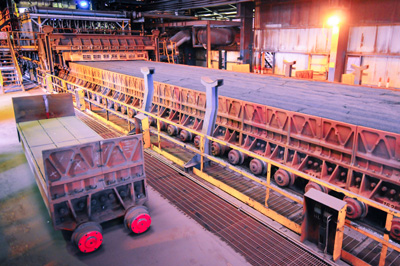
Sintering, source: BlueScope Steel
 Coke making research
Coke making research
Coke provides physical support for the ferrous burden in the blast furnace, as well as providing a source of permeability, heat and the reducing environment necessary for the production of iron. For coal producers and coke manufacturers, understanding the performance of different coals and blends during coking and ironmaking process is critically important for efficient utilisation of coal resources.
Centre researchers conduct research for fundamental understanding of coal to coke transformation and evaluate the behaviour of different coals during coke formation as well as coke performance in blast furnace. A focus of research is to understand the impact of parent coal properties in physicochemical structure and strength of coke using innovative methodologies and purpose-built facilities. Some capabilities include:
- In-situ investigation of coking phenomena
- Coke microstructure and microtexture analysis
- Mechanical properties of coke
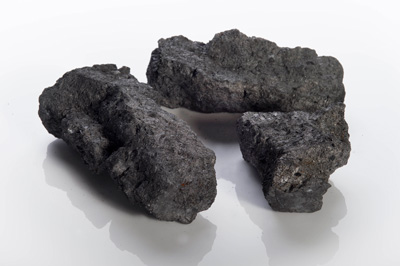
Coke
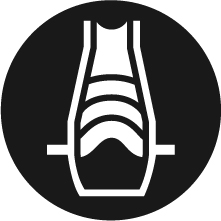 Ironmaking research
Ironmaking research
The blast furnace – basic oxygen furnace process produces over 70% of the World’s steel. In S.E. Asia, the predominant ferrous feed to the blast furnace is sinter, so it is important to optimise the performance of the sinter in the blast furnace. Lump iron ore is a premium product, as it does not have to be agglomerated before charging to the blast furnace. CIMR researchers are evaluating and working to improve the smelting of lump ore and sinter in the blast furnace using laboratory softening and melting tests.
Centre researchers are also carrying out fundamental studies into the phenomena occurring in the cohesive zone of the blast furnace. A focus of the work is the interaction between lump iron ore and sinter in the cohesive zone. Interrupted softening and melting tests are analysed using a combination of optical microscopy and TIMA, as well as X-ray and neutron CT scans to study the development of void structure. This is complemented with numerical modelling.
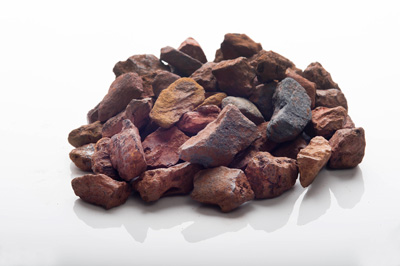
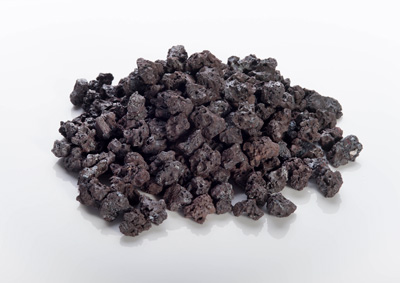
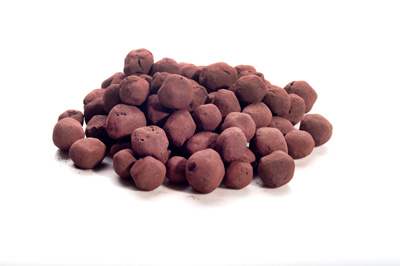
Lump iron ore Sinter Pellet
 Steelmaking research
Steelmaking research
The steelmaking process has been developed over many decades to efficiently remove impurities present in iron ore and coking coals, such as phosphorus. Higher levels of phosphorus in steelmaking slags have limited the ability of steelmakers to recycle slag within the process. Centre researchers are working with the ARC and the University of Wollongong on a project to enable recycling of steelmaking slag and production of a high phosphorus co-products for agriculture.
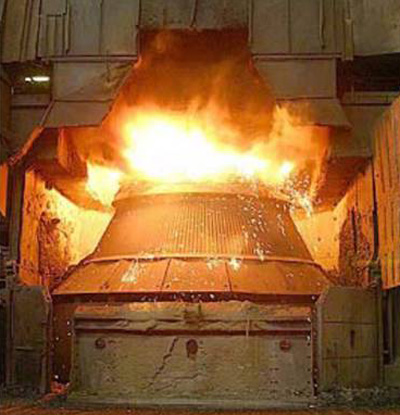
Basic Oxygen Furnace, source: BlueScope Steel
 Low carbon iron and steelmaking
Low carbon iron and steelmaking
Iron and steelmaking accounts for a significant proportion of global greenhouse gas emissions. Both miners and ironmakers are currently striving to reduce their greenhouse gas emissions to meet Paris Climate targets consistent with a 1.5°C temperature rise. A key focus of Centre research is to decrease the greenhouse gas emissions from ironmaking using Australian iron ores and coking coals.
In the short term, the blast furnace will continue to supply the majority of the World’s iron and steel. Centre researchers are investigating the impact of hydrogen injection on the performance of ferrous burdens and coke in the blast furnace.
In the longer term, alternate ironmaking routes will become prevalent, with the industry likely to shift towards production of direct reduced iron using green hydrogen followed by melting in an electric smelting furnace. Centre researchers are assessing the feasibility of alternate green ironmaking technologies, and investigating the behaviours of Australian iron ores and coking coals in these technologies.
The University of Newcastle acknowledges the traditional custodians of the lands within our footprint areas: Awabakal, Darkinjung, Biripai, Worimi, Wonnarua, and Eora Nations. We also pay respect to the wisdom of our Elders past and present.
